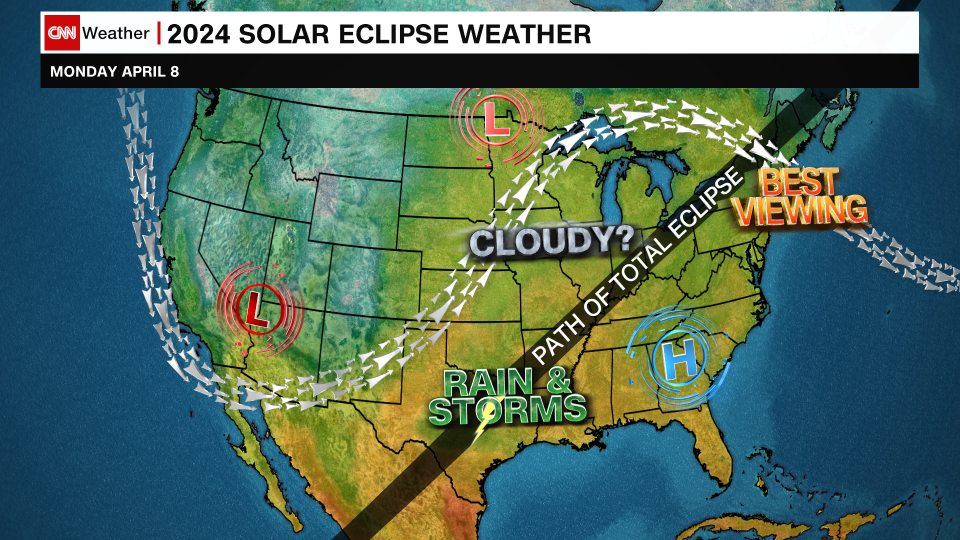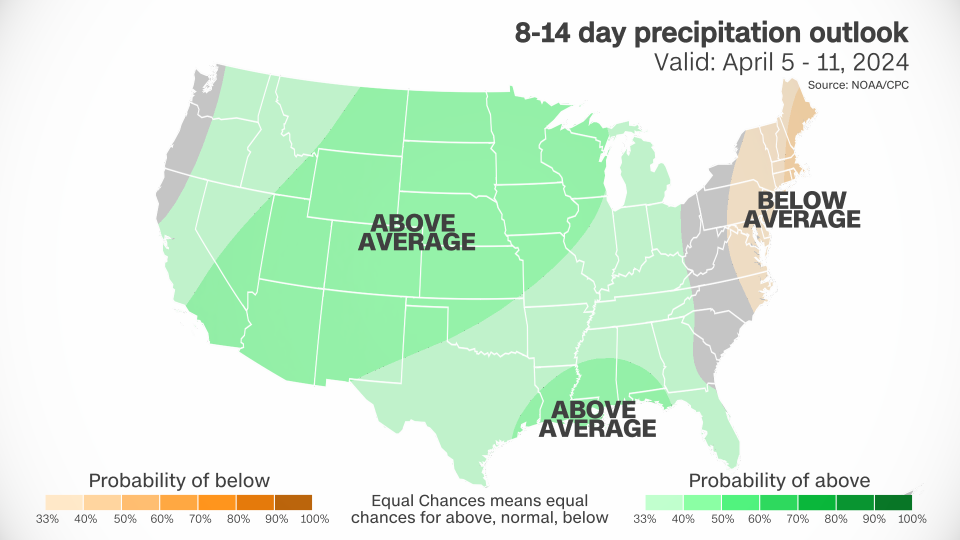Will weather spoil your eclipse view? Here’s an early look
Editor’s Note: Mark your calendars for CNN’s live coverage of Monday’s eclipse: Outlook | Google | Apple iCal | Office365
The upcoming total solar eclipse is a must-see, but whether you get the perfect, dazzling view on April 8 will be decided by the weather.
Clouds could fill the sky and turn what should be a picture-perfect moment into something lesser than.
While it’s still too soon to say definitively what areas could have disruptive cloud cover, past weather data and current potential large-scale weather patterns help to paint a picture of where clouds and rain could spoil the fun. The early indications aren’t the most promising.
Totality, or where the moon will appear to entirely block the sun, will occur along a more than 100-mile-wide path from Texas to Maine, passing over cities like Dallas, Indianapolis, Cleveland and Buffalo, New York.
A partial solar eclipse will occur for the rest of the Lower 48; the closer an area is to the path of totality, the larger the portion of the sun obscured by the moon.
How exactly the clouds play ball in areas of totality and beyond remains to be seen. About 70% of the Earth’s surface is covered by clouds at any given time, according to NASA. But where cloud cover develops on a given day depends on how air masses and storms behave around the globe.
Reliable cloud forecasts for the afternoon of the eclipse should arrive before the end of next week, but meteorologists are starting to get the first signals from forecast models – they’re just prone to massive uncertainty.
“This far out, any forecast of anything as specific as cloud cover is difficult to sort out, if not impossible,” said Chris Buonanno, a meteorologist for the National Weather Service in Little Rock, which will experience totality.
But these models can still provide an early, general clue as to which areas could be cloudy or clear.
Some forecast models show storminess and clouds in the central and southern US, with increased chances for clouds in the eastern half of the country, including over the path of totality. Conditions could improve closer to the East Coast.

As a result, above-normal precipitation is expected for a large swath of totality – from Texas through Indiana – according to a forecast for the week of the eclipse from the Climate Prediction Center.
The same outlook shows near-normal precipitation levels from Ohio into Vermont with below-normal precipitation in much of New England.

A greater chance for wet weather over a longer time period does not guarantee active storms during the eclipse’s short window. Dry weather also does not guarantee clear skies.
In the absence of reliable forecast data, meteorologists can look to history as another indicator for how clouds could act during the eclipse. But that doesn’t look promising, either.
Historically, the highest concentration of clouds in early April has centered on the Northeast, with parts of the Midwest often more cloudy than clear.
Much of the South has equal odds of being cloudy or clear, while parts of Texas and the Southwest are typically more likely to have minimal cloud cover on the date.
Keep checking back for updates as the eclipse nears to see whether or not reality on April 8 is as clouded as history has proven to be.
For more CNN news and newsletters create an account at CNN.com
